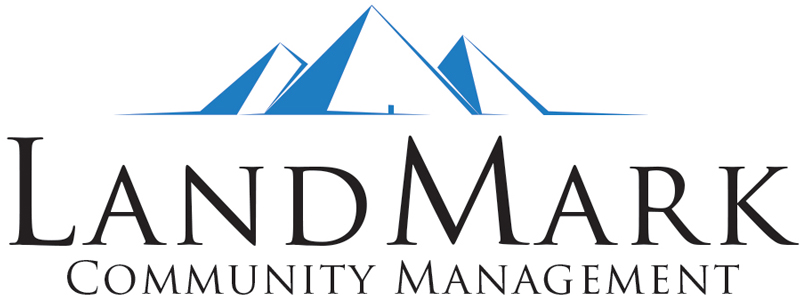The HOA balance sheet is a crucial financial statement that all homeowners must understand. It can give them a glimpse of how the association is faring financially and reveal whether or not any looming financial setbacks hinder the community. Let’s examine what’s inside the HOA balance sheet and how to understand it.
What is an HOA Balance Sheet?
The homeowners association balance sheet offers a snapshot of the community’s finances at a specific time. It’s like an overview of the community’s finances as it lists the HOA’s assets, liabilities, and equities. Through it, homeowners can understand how much is in the community’s accounts, how much the HOA owes, and how much they have as equity.
Breaking Down the Balance Sheet
The HOA balance sheet contains three parts: assets, Liabilities, and Equity. Each account is categorized by section with its respective amount. Let’s examine each category to understand what it means.
1. Assets
Assets are the easiest part to understand. Simply put, they consist of anything the association owns that has monetary value. This includes cash, equipment, furniture, reserve funds, and accounts receivables (debts owed to the HOA).
The assets are further divided into current and non-current assets. Current assets consist of all liquid items—that is, they’re easily convertible into cash. Examples of current assets include accounts like petty cash, Cash in the Bank, inventory, Accounts Receivable, Reserve Funds, and Prepaid Insurance.
Meanwhile, non-current assets are not liquid. They must be converted into cash. This is where possessions like equipment, fixtures, and land come in. Non-current assets also include long-term investments and intellectual property like trademarks and patents.
2. Liabilities
The liabilities of a homeowners association are the amounts the HOA owes to other parties. For example, if the HOA owes any money to its vendors or management company, these will fall under the liabilities category. These can include everything from vendor bills to maintenance fees.
Moreover, everything that costs the HOA money is a liability. Hence, the depreciation of assets such as buildings, vehicles, or equipment is also considered a liability. These are recorded into the accounts so the HOA knows how much their assets are still worth.
In addition, liabilities also have current and non-current categories. Current liabilities are payments owed within one year. These include rental fees, utilities, wages, prepaid assessments, interest, accounts payable, and temporary loans. Meanwhile, non-current liabilities are long-term payments that will become due after one year. These include long-term loans and deferred revenue.
3. Equity
Finally, the balance sheet contains the equity category known as owner’s or shareholders’ equity. This section is computed by deducting the total liabilities from the total assets. It showcases how much value is left for the association after subtracting all the payments due.
How to Interpret the HOA Balance Sheet
The balance sheet generally follows this formula:
Assets = Liability + Equity
This means that all the assets should equal the sum of the liability and equity accounts. If they are not equal, then the financial statement is not “balanced.” This means there was something wrong with the accounting in the community’s general ledger.
Profits, Losses, and the Equity Ratio
If the accounts are equal, then it’s time to interpret how the association is doing financially based on the given amounts. If the equity is higher than the assets minus liabilities, the HOA earns a profit.
This is a good thing, although a larger profit is better than a smaller one. This is because larger profits allow HOAs to budget for more things. They can do more maintenance activities or take on capital improvement projects. Moreover, the profit can be used as reserve funds to reduce the coming year’s assessments.
Conversely, if the equity is less than the assets, the association spends more than it earns. This should prompt the community to reevaluate its finances and adjust accordingly. Otherwise, the community may need help to survive and carry out daily operations.
Another way to interpret the balance sheet is by using the equity ratio. This ratio is an important indicator of the association’s financial health. It is computed as follows:
Equity Ratio = Equity / Assets
This ratio determines how much equity instead of debt and liabilities financed your assets. A low equity ratio means the association has used more debt to pay for its assets, like land and equipment. Meanwhile, a high equity ratio means the HOA uses more equity to finance its operations.
When Should HOAs Prepare the Balance Sheet?
Many associations prepare the HOA balance sheet annually. This is a perfectly acceptable practice and is often the only requirement. However, preparing it more frequently is better so the community can clearly understand the HOA’s financial performance. More frequent preparation allows the board to adjust their operations on the fly.
This is why some HOAs prepare their balance sheets quarterly. Some may even prepare theirs monthly to get a more accurate read on the HOA’s finances. It’s also best to review the governing documents. If they require more frequent reporting, then the board must do so.
Apart from this, state law may also have requirements involving financial reporting and financial transparency. Many states only require annual preparation. For example, HOAs are required to prepare financial statements, including balance sheets, once every fiscal year in California. However, the HOA must comply if your state law requires more frequent balance sheet preparation.
HOA Balance Sheet Example
Without an accountant or professional management company, it may be difficult for the HOA treasurer to draft a balance sheet. After all, these professionals not only have HOA financial statements example templates but can also do the entire accounting for you.
To get you started, here is a simple sample balance sheet you can use in your homeowners association:
ASSETS
Current Assets:
- Cash: _______________
- Accounts Receivable: _______________
- Prepaid Expenses: _______________
- Total Current Assets: _______________
Non-Current Assets:
- Property, Plant, and Equipment: _______________
- Long-term Investments: _______________
- Total Non-Current Assets: _______________
TOTAL ASSETS: _______________
LIABILITIES
Current Assets:
- Accounts Payable: _______________
- Accrued Expenses: _______________
- Short-Term Loans: _______________
- Total Current Liabilities: _______________
Non-Current Liabilities:
- Bonds Payable: _______________
- Mortgage Loans: _______________
- Total Non-Current Liabilities: _______________
Total Liabilities: _______________
EQUITY
- Opening Balance: _______________
- Contributions: _______________
- Net Profit/Loss for the Period: _______________
Total Equity: _______________
TOTAL LIABILITIES + EQUITY: _______________
Preparing the Balance Sheet the Right Way
Every homeowners association needs to prepare the HOA balance sheet. This lets the board and community members understand how the HOA is doing financially. It allows them to adjust their monthly assessments and see what costs they can cut to stay financially healthy.
Are you in need of professional assistance when it comes to accounting? Landmark Community Management offers industry-leading financial management services to HOAs. Call us today at 512-569-5527 or contact us online to request a proposal!
RELATED ARTICLES:


